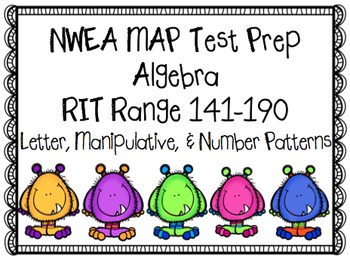NWEA MAP Math Patterns
Kristen Mosley
51 Followers
Grade Levels
K - 4th
Subjects
Resource Type
Standards
CCSSK.CC.A.2
CCSS1.NBT.A.1
CCSS2.NBT.B.5
CCSS1.OA.C.5
CCSS2.OA.C.3
Formats Included
- PDF
Pages
43 pages
Kristen Mosley
51 Followers
What educators are saying
Resources to help with NWEA practice skills, especially by RIT band, are so hard to find. This was a good way for us to work through different question levels.
Description
This no prep Pattern Practice Packet aligns to NWEA MAP Primary Grades Algebra test questions. The packet provides practice for students to master RIT ranges 141-190 in Algebraic Patterns!
Students can create and extend patterns through coloring, drawing, adding, subtracting, and cut and paste! There are also anchor charts for the classroom and for individual student folders, as well as a foldable for more hands-on learning!
Great for test prep, homework, morning work, math stations, and extra practice in tutoring! This packet is also a great extension or for fast finishers! Activities include letter, manipulative, and number pattern practice. Click "Preview" to see a wider selection of what is included!
Total Pages
43 pages
Answer Key
N/A
Teaching Duration
N/A
Report this resource to TPT
Reported resources will be reviewed by our team. Report this resource to let us know if this resource violates TPT’s content guidelines.
Standards
to see state-specific standards (only available in the US).
CCSSK.CC.A.2
Count forward beginning from a given number within the known sequence (instead of having to begin at 1).
CCSS1.NBT.A.1
Count to 120, starting at any number less than 120. In this range, read and write numerals and represent a number of objects with a written numeral.
CCSS2.NBT.B.5
Fluently add and subtract within 100 using strategies based on place value, properties of operations, and/or the relationship between addition and subtraction.
CCSS1.OA.C.5
Relate counting to addition and subtraction (e.g., by counting on 2 to add 2).
CCSS2.OA.C.3
Determine whether a group of objects (up to 20) has an odd or even number of members, e.g., by pairing objects or counting them by 2s; write an equation to express an even number as a sum of two equal addends.





